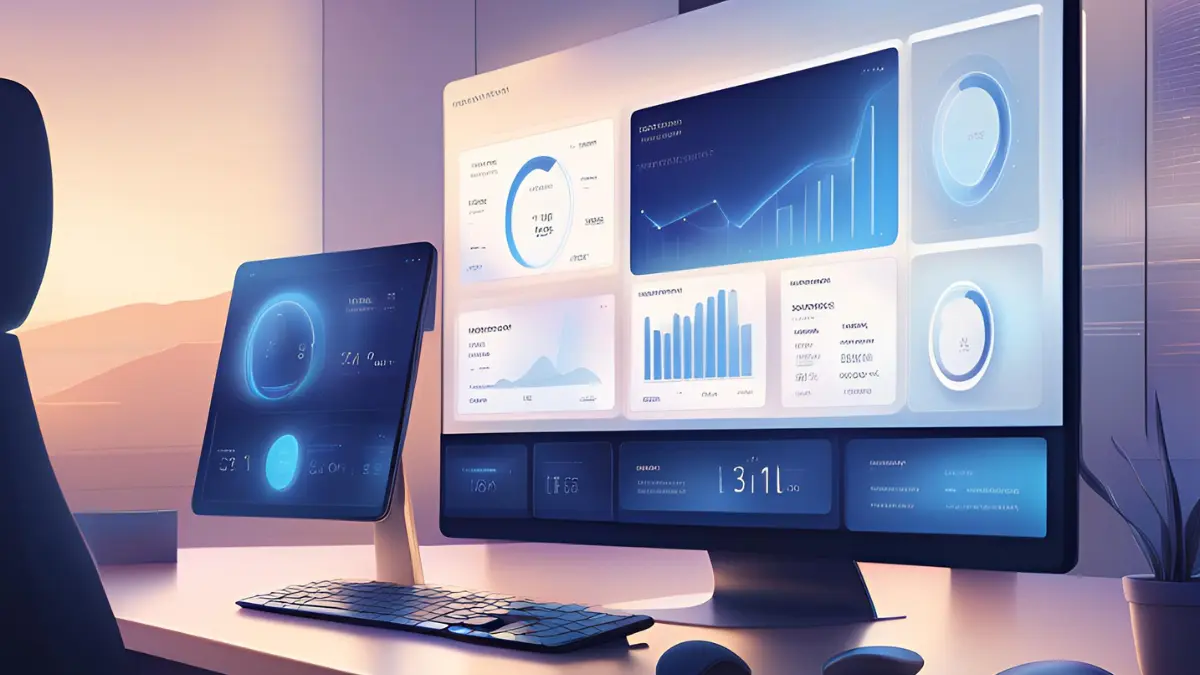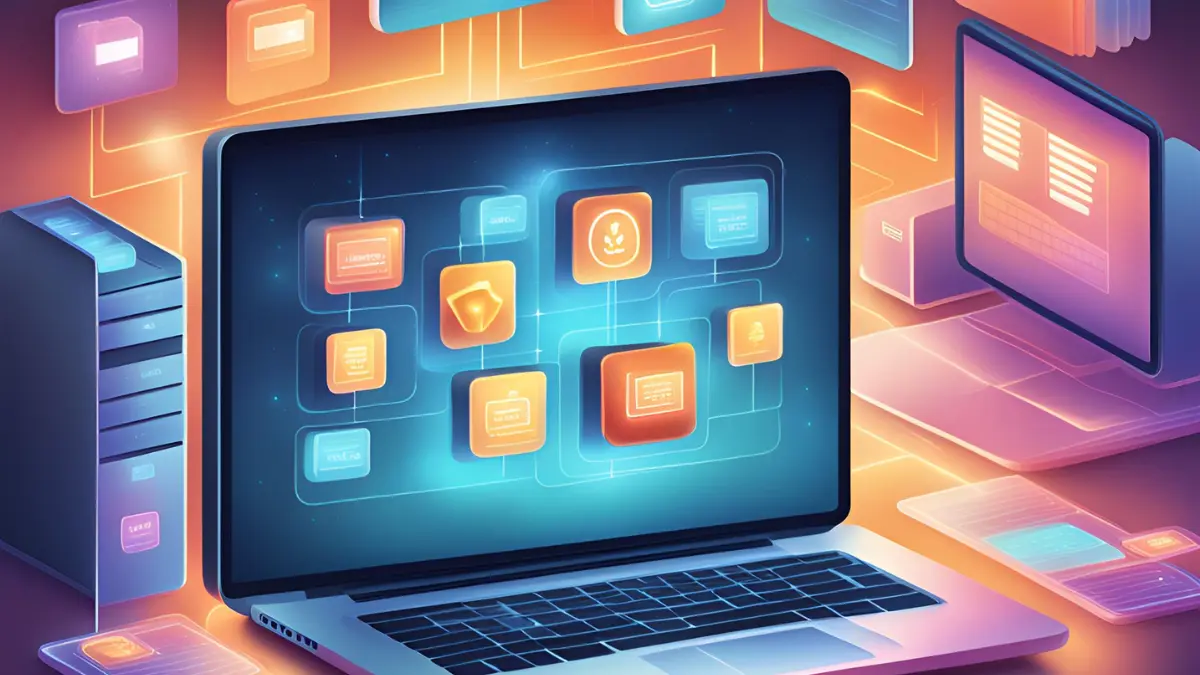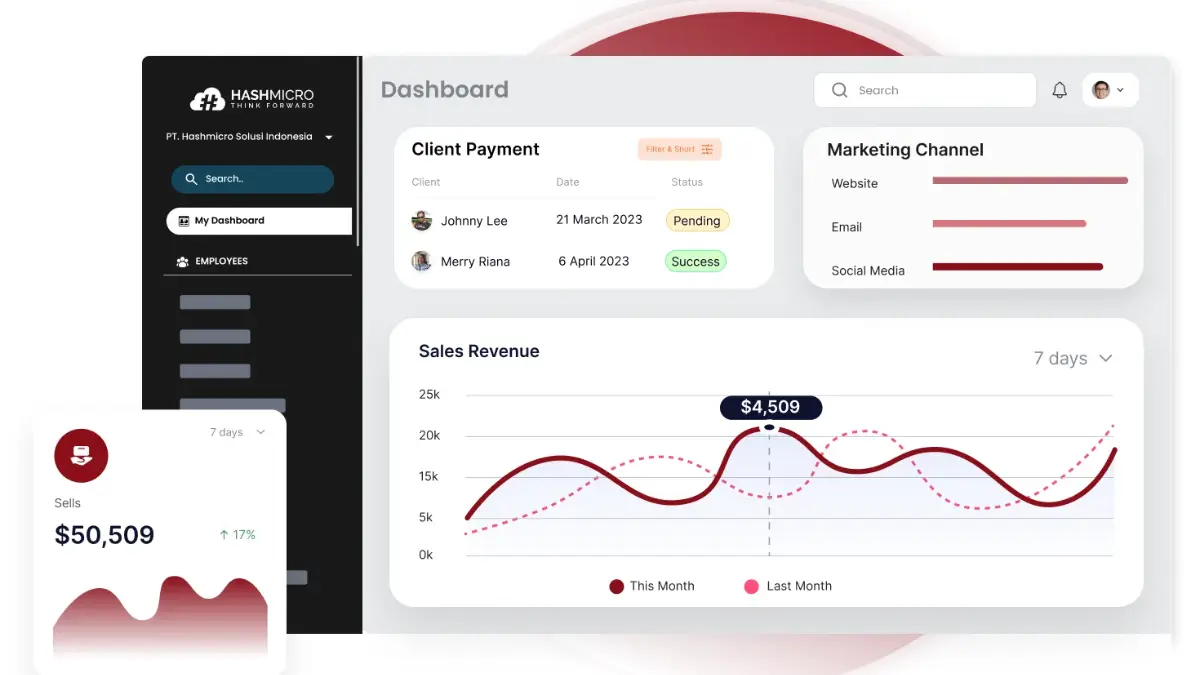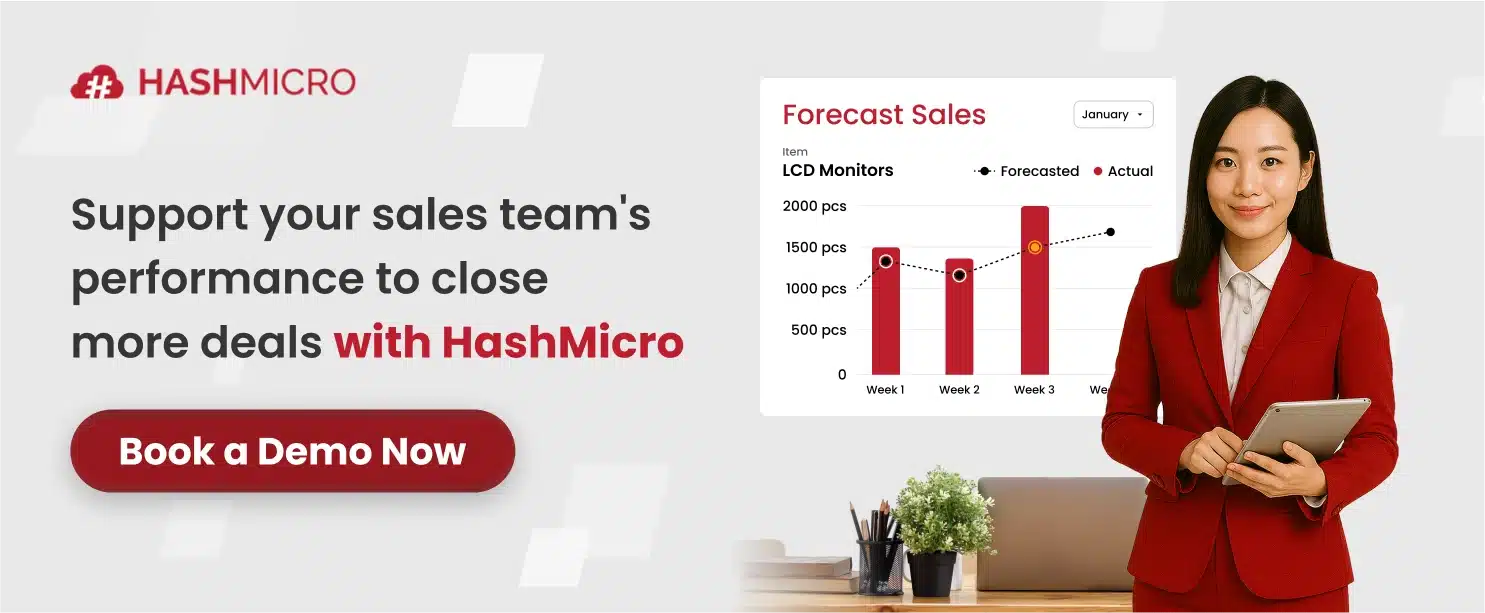In today’s competitive retail landscape, customer expectations are higher than ever. Customers demand personalized experiences that go beyond traditional shopping. Retailers must find innovative ways to meet these expectations and build long-lasting customer loyalty.
One of the biggest challenges in client management is efficiently managing and utilizing vast amounts of customer data. Retail managers often struggle with delivering personalized experiences at scale while maintaining consistency across all customer touchpoints.
A study conducted in Singapore revealed that retailers implementing advanced clienteling tools saw a 20% increase in customer retention and satisfaction. The Singapore Business Review has more about this case study.
This article will explore the essentials of clienteling and how the right software can solve these challenges. Continue reading to discover how advanced client management solutions can transform your retail business.
Key Takeaways
|
What is Clienteling?
Clienteling is a strategic approach businesses use to boost customer loyalty and satisfaction through personalized interactions and managing client expectations. By leveraging customer data, like purchase history and preferences, companies create tailored, unique shopping experiences.
This personalized service fosters deeper customer relationships and encourages repeat business, ultimately increasing customer lifetime value. By using a client management system, it helps businesses better understand their customers and offer genuinely resonating recommendations or promotions.
In today’s digital age, digital client management has become even more integral to client management in retail, enabling brands to deliver a more engaging and seamless in-store and online experience. By implementing clienteling best practices, retailers can transform every interaction into an opportunity for building long-term customer loyalty.
How Does Clienteling Work?

Clienteling works by combining personalized human interaction with the support of technology, creating a seamless shopping experience. By integrating client management solutions with a point-of-sale system, often available on mobile devices, sales associates can assist customers anywhere on the store floor quickly and precisely.
Through CRM software for clienteling, sales associates can proactively engage with customers by accessing their profiles, which include past purchases and preferences. This retail client management software allows for personalized service that makes customers feel valued, which is crucial in helping them decide where to shop.
For example, when a regular customer enters a store, the associate can instantly view their previous purchases and specific preferences using digital clienteling tools. By providing tailored recommendations, the sales team enhances the shopping experience, ensuring that clienteling best practices increase customer satisfaction and loyalty.
Key Components of Clienteling
Clienteling involves several vital components that empower businesses to deliver personalized and meaningful customer experiences. These components ensure that interactions are relevant and foster long-term loyalty.
The following are some of the components of Clienteling:
- Accurate customer data: Collect and maintain accurate customer data to form the foundation of effective clienteling solutions. With precise information, businesses can offer more relevant interactions and recommendations.
- Segment customers: Segment your customers into distinct groups based on their preferences and behaviors. This allows retail clienteling tools to craft more personalized strategies that resonate with each group.
- Personalized communication: Implement personalized communication to make customers feel valued. Digital clienteling strategies can help tailor messages, making each interaction more engaging and relevant.
- Tailored recommendations: Provide tailored recommendations that align with individual customer preferences. Businesses can use CRM clienteling to ensure every suggestion is carefully crafted to meet specific needs.
- Customer profiles: Build comprehensive customer profiles that consolidate data on preferences, purchase history, and interactions. This makes it easier for retail clienteling software to deliver targeted promotions and services.
- Rich product information: Offer rich product information to assist customers in making informed decisions. Clienteling best practices recommend providing comprehensive details that enhance the shopping experience.
- Tailored promotions: Deliver tailored promotions that speak directly to customer interests. With the help of a clienteling app, businesses can craft offers that feel exclusive and personal.
- Exceptional customer service: Deliver exceptional customer service by leveraging clienteling software. Offering personalized attention helps build strong relationships and enhances customer satisfaction.
Types of Clienteling

Clienteling encompasses several critical roles within a business, where leveraging customer data significantly enhances personalized service. Each role contributes uniquely to creating a more tailored and engaging customer experience, transforming interactions into meaningful connections.
- Call center/after-sales service: Leverage clienteling solutions in call centers to access customer history and preferences, ensuring personalized support. This enables agents to resolve issues efficiently and build stronger customer relationships, enhancing overall satisfaction.
- Cashier: At the point of sale, cashiers use retail clienteling software to access customer data and offer targeted recommendations. This helps personalize the checkout process, making it more engaging and aligned with customer needs.
- Sales advisor: Sales advisors utilize clienteling software to provide customized product recommendations based on customer profiles. With CRM clienteling, advisors can offer expert advice that strengthens relationships and increases sales opportunities.
- Marketing: In marketing, digital client management allows brands to tailor campaigns to individual customer preferences. By utilizing personalized data, marketing teams can craft targeted communications that resonate more effectively with their audience.
- Consumer: On the consumer side, clienteling manifests as personalized experiences that feel tailored and exclusive. Whether through a clienteling app or other tools, consumers enjoy customized product suggestions and personalized promotions that enhance their shopping experience.
Benefits of Clienteling for Retailers and Customers

Clienteling offers significant advantages for both retailers and customers by enhancing interactions, boosting revenue, and improving overall shopping experiences. With the help of advanced tools and personalized strategies, businesses can create stronger connections with their clientele, resulting in long-term loyalty and success.
1. Improves customer engagement and loyalty
By leveraging clienteling tools, retailers can provide personalized communication based on customer preferences and past purchases. This targeted approach fosters deeper customer engagement, strengthening loyalty and repeat business.
2. Increases revenue
With clienteling software, retailers can offer tailored recommendations and promotions, increasing the likelihood of additional purchases. Businesses meet customers’ specific needs and boost conversion rates and overall sales.
3. Optimizes inventory management
Using CRM clienteling, retailers can better anticipate demand and align their inventory with customer preferences. This leads to more accurate stock levels, reducing overstock and minimizing stockouts.
4. Creates cross-selling and upselling opportunities
Analyzing customer data through retail clienteling software allows retailers to identify relevant cross-selling and upselling opportunities. Suggesting complementary or premium products enhances the overall transaction value.
5. Enhances the in-store experience
Through digital clienteling, sales associates can access real-time customer data and offer tailored assistance in-store. This personal touch creates a more engaging and satisfying shopping experience for customers.
With the right tools, you can elevate your customer interactions and ensure a seamless shopping experience. To explore how HashMicro’s software can help, click the banner below for a price estimate tailored to your business needs.
6. Boosts adaptability to changing market trends
With clienteling best practices, retailers can quickly adapt to shifting market trends and customer preferences. Staying agile allows businesses to remain relevant and competitive in a rapidly evolving retail landscape.
Best Practices for Clienteling

To maximize clienteling’s benefits, it’s essential to follow proven strategies that enhance customer relationships and drive long-term success. These best practices ensure businesses can deliver personalized, meaningful experiences through the right tools and approaches.
1. Use the right tools
Selecting the right clienteling tools is crucial for scaling personalized customer experiences effectively. A robust CRM client management system is the foundation, allowing you to store and manage customer data in one place while integrating it across various channels.
This omnichannel approach ensures real-time insights, making your recommendations timely and accurate. Additionally, retail clienteling software with mobile functionality helps staff access and update customer data on the go, enhancing the in-store experience.
Having the right CRM software is essential for seamless client management. HashMicro offers a powerful solution tailored to optimize customer interactions across all channels. Try their free demo to see how it enhances your clienteling efforts effectively.
2. Build genuine connections
Fostering genuine connections with customers is at the heart of successful clienteling. Encourage staff to listen actively, show empathy, and tailor recommendations based on customer needs, not just immediate sales opportunities.
When customers feel valued, they are more likely to trust your brand, even if a transaction doesn’t happen immediately. Businesses can create lasting impressions that drive loyalty by using digital clienteling techniques, such as personalizing web chat or email communications.
3. Measure success and adjust strategies
Regularly measuring the success of your client management helps ensure that your strategies are on track. Use key performance indicators (KPIs) such as customer retention, average order value, and customer satisfaction to gauge performance.
If specific metrics like customer lifetime value (CLV) are lower than expected, adjust your approach to offer more relevant recommendations. Monitoring these metrics allows you to refine your clienteling best practices and stay responsive to customer needs.
4. Regularly monitor and analyze results
Consistently reviewing and analyzing results is essential for identifying areas that need improvement. If customer satisfaction scores are low, consider collecting qualitative feedback through surveys or interviews to gain deeper insights.
This feedback helps remove the guesswork and provides a clear path for enhancing customer interactions. By leveraging clienteling solutions and adapting your strategies based on data, you can continually improve your service and build stronger customer relationships.
Difference Between Clienteling and Customer Service

While both clienteling and customer service focus on improving the customer experience, client management takes a more personalized and proactive approach. Unlike traditional customer service, which primarily addresses immediate issues, clienteling solutions anticipate customer needs and foster long-term relationships.
Clienteling relies on detailed customer data and retail clienteling tools to tailor interactions, making each experience feel unique. In contrast, customer service tends to be reactive, offering assistance only when the customer seeks support.
By integrating digital client management through CRM systems, businesses can enhance customer loyalty with tailored recommendations and personalized outreach. On the other hand, customer service is often transactional, focusing on resolving problems rather than deepening customer connections.
Evolution of Clienteling: from Face-to-Face to Virtual Clienteling
Clienteling started as a personal, face-to-face approach where store associates remembered customer preferences and offered tailored recommendations in person. Today, it has shifted to a digital experience, allowing businesses to engage customers across multiple online channels.
With the rise of digital clienteling, brands now use clienteling software and tools to access real-time data for personalized virtual interactions. This enables the same level of service as traditional methods but across various digital platforms like email and chat.
Clienteling apps now provide instant insights, enabling businesses to maintain strong, personal relationships from anywhere. This evolution allows retailers to offer personalized service without needing in-store visits, keeping customer connections intact.
For businesses seeking a practical solution, HashMicro’s Sales Lead Management Software offers powerful features that help maintain strong, personal relationships and streamline customer engagement across multiple channels.
Simplify the Clienteling Process with HashMicro’s Automated Sales Lead Management

HashMicro’s Sales Lead Management software is one of Singapore’s most effective tools for clienteling management. Its robust features and user-friendly interface streamline the process, making it ideal for businesses looking to optimize their client relationships.
If you want to explore how this system can transform your sales and clienteling process, try a free demo today to experience its full capabilities firsthand. It’s the perfect opportunity to see how HashMicro’s solution can support your business growth.
The Sales Lead Management system comes equipped with several standout features designed to enhance business efficiency, these features include:
- Customer Segment (RFM) Analysis: Utilize customer segment (RFM) analysis to categorize clients based on purchase behavior, ensuring a tailored approach for each customer group. This analysis helps you focus on high-value customers and personalize your clienteling strategies effectively.
- Sales Loyalty Management: Implement sales loyalty management to build long-term customer relationships and encourage repeat purchases. This feature allows you to create reward programs that increase client engagement and loyalty.
- Upselling Recommendation: Leverage upselling recommendations by analyzing customer history and frequently bought items to suggest relevant products. This feature boosts sales by offering personalized suggestions that resonate with each client’s preferences.
- CRM Sales: Manage client relationships with CRM sales, which allows you to track interactions, nurture leads, and strengthen customer connections. This ensures that every communication is streamlined and client data is centralized for easy access.
- Customer Portal: Provide clients with a portal for seamless access to their account details, order history, and ongoing transactions. This transparency enhances customer satisfaction and fosters trust in your business.
- Online Quotation with Online Signature: Simplify transactions with online quotation and signature, enabling clients to receive, review, and sign quotations digitally. This feature speeds up the sales process while maintaining security and convenience.
- Sales Mobile Apps – Android & iOS: Empower your sales team with sales mobile apps, available on Android and iOS, to manage client data and sales activities on the go. This ensures real-time updates and flexibility, keeping your team connected with clients at all times.
- Custom Printout in Quotation: Customize quotations with custom printout options, allowing you to create tailored documents for different types of customers. This personalized touch enhances the client experience and makes your business stand out.
Moreover, HashMicro offers flexible customization beyond its key features to meet specific business needs. It also integrates seamlessly with various third-party systems, making it the ideal solution for complex business requirements.
Conclusion
Clienteling is a powerful strategy that enables retail businesses to create personalized, engaging customer experiences. By leveraging customer data and tailoring interactions, retailers can build stronger relationships, enhance customer loyalty, and drive long-term success.
HashMicro’s Sales Lead Management offers one of the best clienteling solutions for businesses looking to streamline and optimize their clienteling efforts. With its comprehensive CRM clienteling tools, retailers can manage customer data efficiently and provide personalized service that enhances in-store and online experiences.
To experience the full clienteling benefits, try HashMicro’s free demo today. Discover how clienteling best practices can transform your business and elevate customer relationships.
Warning: Undefined array key "med" in /home/hashmicr/public_html/blog/wp-content/plugins/insert-headers-and-footers/includes/class-wpcode-snippet-execute.php(419) : eval()'d code on line 281














